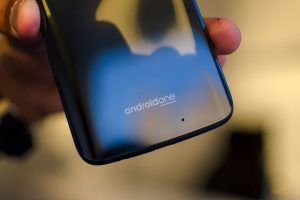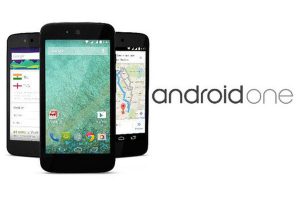 Android is one of the most popular operating systems in the world, used on more than 2.2 billion devices worldwide (as of May 2018). If you don't use smartphones Apple, then you are probably one of the 2.2 billion people using mobile devices on Android.
Android is one of the most popular operating systems in the world, used on more than 2.2 billion devices worldwide (as of May 2018). If you don't use smartphones Apple, then you are probably one of the 2.2 billion people using mobile devices on Android.
The main reason for the tremendous success of the system is its flexibility. There is no OS on the market today that can match Android in terms of flexibility. For this reason, most mobile electronics manufacturers choose Android – the platform for their gadgets and even try to improve it by creating proprietary shells (EMUI from Huawei / LG UX, MIUI from Xiaomi), adding additional chips and fixing the shortcomings of pure Android. Thus, companies can create a “business card” of their company, thereby highlighting the uniqueness and exclusivity of the brand.
At the same time, this is also a weak point of the system. The distribution of new updates on most devices is very slow, for example, as of October 2018, only 19.2% of active Android devices were updated to Android 8.0 Oreo. As a reminder, Android 9.0 Pie was released not so long ago.
This issue has a very bad effect on the OS as a whole. What attempts is the company making to solve this problem? Or at least reduce its influence? Google offered the public a clean version of OS – Android One, which quickly installs all updates and consumes much less resources.
What is Android One?
What is “little brother” Android? The name of this version doesn't mean anything at all, so you don't have to speculate. This is a cropped version Android – a system that is as close as possible to the “stock” (pure) Android.

Moto X4 with Android One on board.
Having purchased such a device, you will not see anything on it except for optimized Google applications and other software necessary for the correct operation of all elements of the OS. Even Android on Pixel devices is not as similar to the “classic” version as Android One. In short, it is Android what Google would like to see it.
Launched back in late 2014, Android One targeted budget device owners. This version is mainly targeted at the market in India, Indonesia and South Asian countries. In Android One, all unnecessary software, effects were removed and the interface was optimized, which significantly reduced the load on the smartphone.
Together with all the improvements of Android itself, Android One was also improved, as a result of which budget devices stopped working normally even with this operating system. Therefore, in May 2017, Google announced Android Go, which became many times more optimized than its predecessor. The new version of the “stock” Android is still intended for budget devices with a weak battery. In the new lightweight version, the system itself began to take up half the space than the regular one Android, so you can store more data than before.
At what stage of development is Android One at the moment? Now Android One is a series of devices from various manufacturers that comes with stock Android. The original idea of releasing budget-class devices on the “lightweight” Android One is gone – now this program unites all devices with “naked” Android.
to the content
Should I buy a phone on Android One?
What does the user get from this operating system?
Firstly, although Android One weighs almost as much as the “clean” Android, you won't find any additional programs in it that slow down your phone. Third-party applications, shells and other “pollutants” of the operating system, which are installed in large quantities on any smartphone, can significantly reduce the performance of the device, as a result of the heavy load on the device's hardware.
If you will be using a device controlled by Android One – you can not worry about all this. Despite the “cut-off” version, it has all the functions that are in the usual Android. For example, Google Assistant, Google Lens and other things – you can use all of this. As for the features added in Android 9.0 Pie, they will soon be added to the “lite” version of the OS.
What Android One can please you with is the frequency of the latest updates. Many people criticize Android smartphones for the too slow speed of new updates Android OS due to the proprietary shells of the manufacturers. And it doesn't depend on the size of the update, whether it's fixing a couple of small bugs or updating security algorithms, and it's not worth talking about such big updates as the release of a new version Android. This is due to the fact that manufacturers have to update their UI for each new update, which takes a long time.
In this regard Android One is definitely in the lead. Even though manufacturers still have to update their devices for new updates, it takes much less time, and therefore updates come more often. Of course, you shouldn't expect the update that came to the Google Pixel to arrive on your smartphone on the same day, but in any case, it will arrive much earlier than on other smartphones.
Google also provides a kind of guarantee that devices based on Android One will receive all security updates within three years from the date of its release on the market, as well as all Android OS updates within two years. That is, if you bought a phone with Android One based on Android 8.0 Oreo, then you will receive an official update to Android Pie and, not yet announced, Android Q, Same goes for monthly Security Patch updates Android.
to the content
What phones work on Android One?
If you still decided to try Android One, a logical question arises: “Which smartphone should you choose?” Unfortunately, this can be a problem.

Since Android One is just developing, it is not available on that many devices. Currently Android One is used primarily on entry-level, budget and mid-range devices. On flagship and near flagship devices, OSs are rarely used.
At the time of this writing, there are only a handful of smartphones from well-known companies using Android One. And Nokia, apparently, is the most ardent supporter of this operating system: it is used on most of the company's latest smartphones, such as the Nokia 6.1 / 7.1 / 8 Sirocco. The well-known Motorola also decided to test the novelty on its Moto X4 and Motorola One.
As you can see, many manufacturers are trying to use Android One on their cheaper counterparts, and there are more and more such companies. LG announced about a budget smartphone LG G7, which will run Android One. There are also rumors on the net that the future Nokia flagship – Nokia 9 PureView will use Android One, and Xiaomi Mi A2 received this OS. In order to facilitate the search for a smartphone with Android One, we recommend that you visit the official Android page, with a list of all devices running this OS.
Many thought that these devices would fade into oblivion when Android Go was born, but thanks to continued support from Google, it can be said that this operating system is still ahead.
